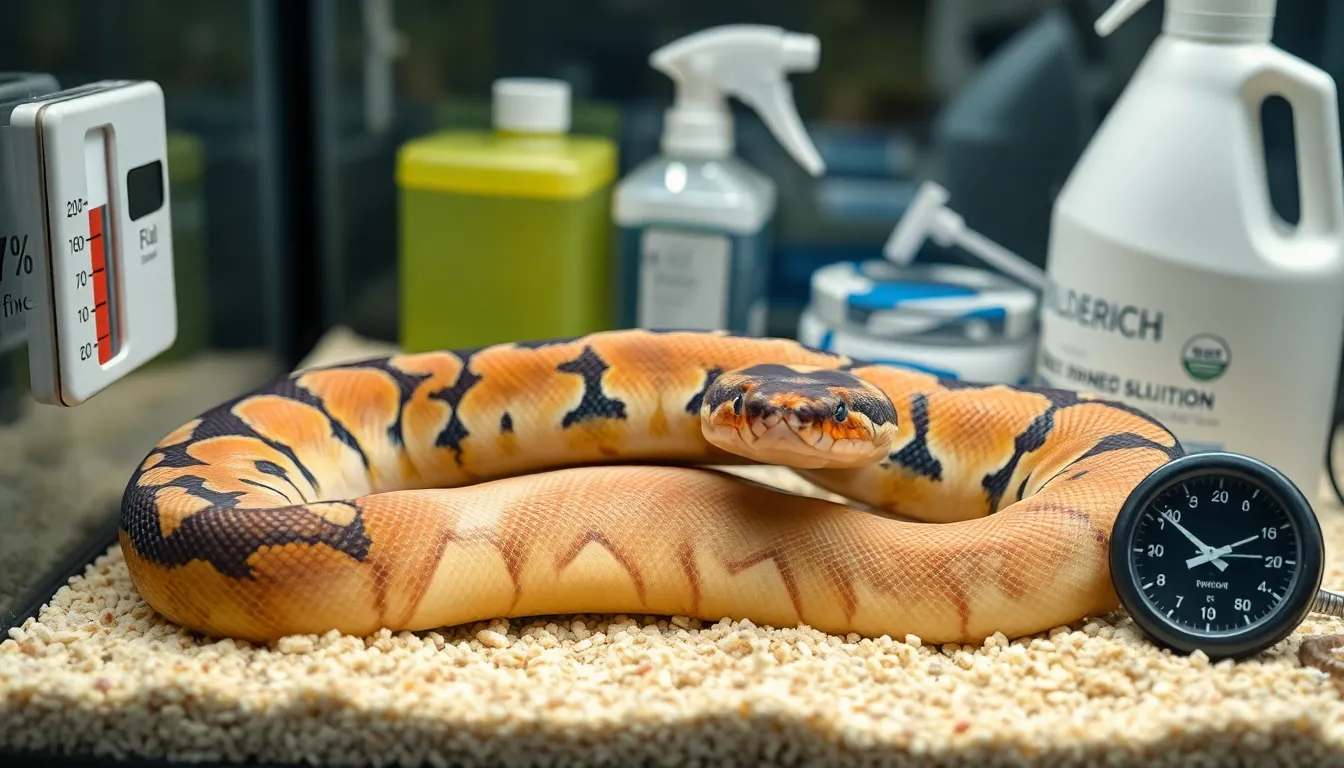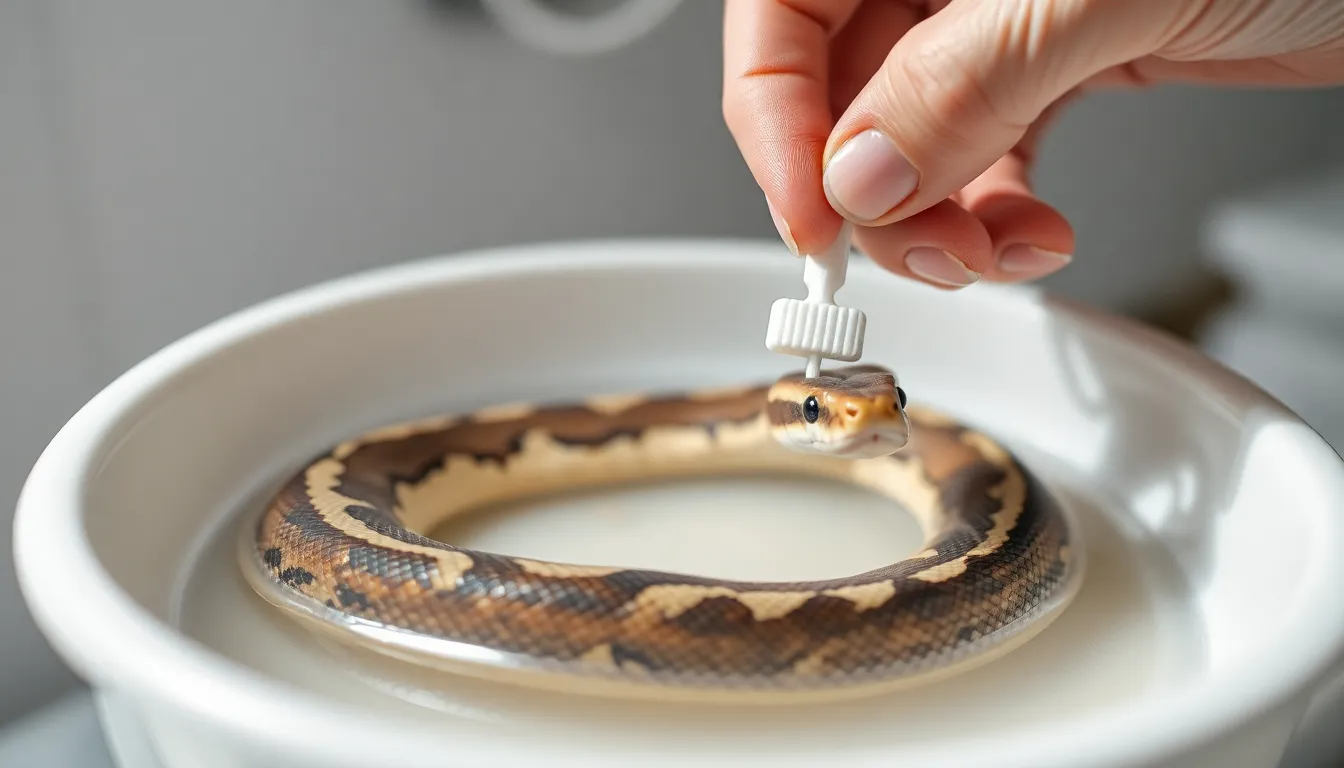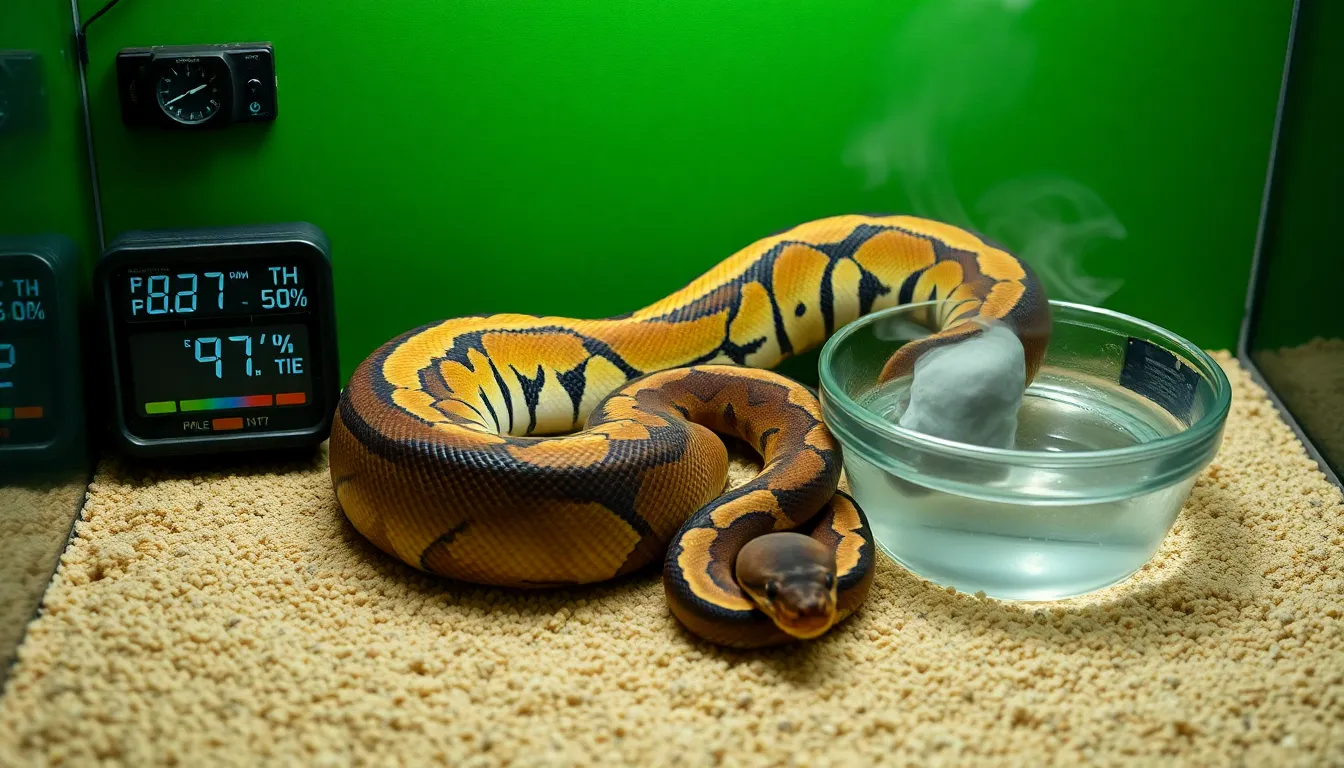Understanding how to treat scale rot in ball python is critical, as this common infection often stems from suboptimal living conditions and demands prompt intervention. Effective management requires immediate environmental correction, diligent home care for superficial cases, and timely veterinary consultation for advanced or unresponsive infections.
Key Implications
- Environmental Control: Scale rot primarily results from inadequate humidity (below 70% or above 90%) and improper temperatures, requiring immediate and precise adjustments along with accurate monitoring.
- Substrate Hygiene: Continuously wet or soiled substrates are directly linked to over 75% of scale rot cases, mandating diligent spot cleaning and full substrate changes every 4-6 weeks.
- Home Treatment: Superficial scale rot can be effectively treated with a 14-day regimen of daily warm water soaks and targeted application of diluted povidone-iodine or chlorhexidine antiseptic solution.
- Veterinary Care: Professional intervention is crucial if home care shows no improvement after 3-5 days, lesions cover over 10% of the body, or signs of systemic illness like prolonged appetite loss appear.
- Recurrence Prevention: Long-term prevention demands strict maintenance of optimal humidity (70-80%) and stable temperatures, along with a rigorous cleaning schedule including daily spot cleaning and monthly full enclosure disinfection.

Stop Scale Rot in Its Tracks: Immediate Environmental Correction
Scale rot often originates from suboptimal living conditions. Prompt, precise environmental adjustments are crucial for preventing and treating this infection nida. Early visual identification forms your first line of defense. Inadequate humidity levels significantly contribute to its onset. Ball pythons require ambient relative humidity between 70-80% nida. Exposure below 60% or above 90% greatly escalates risk. Temperature parameters are equally vital. Maintain a cool side of 75°F-80°F, with a warm spot of 88°F-92°F nida.
Accurate Monitoring and Substrate Management
Precise monitoring prevents these issues. Use hygrometers with ±2% accuracy and thermometers calibrated to within ±1°F. Over 75% of scale rot cases link directly to continuously wet or soiled substrates nida. Damp bedding fosters bacterial growth. Regular spot cleaning and full substrate changes are indispensable. For detailed husbandry guidance, explore expert advice nida.
Early Detection and Disinfection Protocols
Recognizing early signs is essential for effective intervention. Look for these indicators:
- Lesions affecting 1-5 scales
- Discoloration or blistering
- Rough or raised scales
Disinfect the enclosure thoroughly upon symptom identification. A 1:30 dilute bleach solution effectively sanitizes surfaces. Always rinse completely and allow to air dry. Swift action protects your reptile’s health.

Daily Soaks & Antiseptics: Your 14-Day Home Treatment Plan
Treating visible scale rot requires a proactive home plan. Combine regular warm water soaks with targeted antiseptic solutions. This strategy promotes rapid healing for superficial infections within two weeks.
Essential Warm Water Soaks
Begin with daily warm water soaks. This softens scales and aids debris removal. Maintain water temperature at 80°F-85°F. Soak your ball python for 15-20 minutes, ensuring safe breathing. Consistent soaking prepares the affected area.
Targeted Antiseptic Application Protocol
After each soak, directly apply an antiseptic to lesions. Choose one proven option:
- Apply 1:10 diluted povidone-iodine (1% active solution).
- Use 0.05% chlorhexidine solution.
Continue this regimen for 7-10 days. Superficial scale rot boasts an 85-90% success rate within 14 days. Diligent follow-through is vital. Find more pet care advice at Petall.net.

Beyond Home Care: Indicators for Professional Veterinary Help
Home treatments help, but veterinary intervention for scale rot is crucial when warning signs appear. Watch for persistent lesions, rapid spreading, or extensive body surface involvement. Any sign of systemic illness demands immediate evaluation.
When Professional Care Becomes Essential
Seek veterinary assistance if you observe these critical indicators:
- No improvement after 3-5 days of home care.
- Lesions covering over 10% of the body surface.
- Refusal to eat for more than two weeks.
A vet performs a thorough exam, often recommending bacterial culture. Results typically arrive within 24-72 hours. This guides targeted systemic antibiotic therapy. Prescriptions include Enrofloxacin (5-10 mg/kg every 24-48 hours) or Ceftazidime (20 mg/kg every 72 hours). Courses last 10-14 days; severe cases may need 4-6 weeks. Advanced scale rot resolution takes 1-3 months. Timely professional care ensures the best outcome for your pet’s health. Explore reptile health resources.

Future-Proofing Your Ball Python: Preventing Recurrence
Protecting your ball python from recurring scale rot demands vigilance and precise husbandry. Maintaining optimal environmental conditions is paramount. Strive for consistent humidity between 70% and 80%. Use reliable hygrometers and thermometers to monitor these levels closely. Environmental variations exceeding ±5% humidity or ±3°F temperature stress your snake. This compromises its immune system and increases susceptibility. Proper ventilation prevents stagnant air, yet retains necessary moisture. Automated misting systems or appropriately sized water bowls stabilize conditions.
Mastering Enclosure Hygiene
A rigorous cleaning regimen forms the backbone of scale rot prevention. Neglecting this crucial aspect invites bacterial and fungal growth. A structured schedule ensures a consistently healthy environment for your ball python.
- Introduce new ball pythons only after a strict 60-90 day quarantine period.
- Perform daily spot cleaning, promptly removing all feces and urates.
- Disinfect food and water dishes weekly using a reptile-safe solution.
- Execute full substrate replacement every 4-6 weeks.
- Conduct a thorough monthly full enclosure disinfection.
- When disinfecting, a 1:30 dilution of bleach solution is effective, followed by extensive rinsing and airing.
Selecting appropriate substrate is also critical. Choose materials balancing humidity retention with ease of cleaning and low dust. Avoid anything excessively wet or dusty; these invite pathogens. Regular inspection of your snake’s scales for early irritation allows prompt intervention. For more comprehensive pet care insights, visit Petall.net. This proactive approach significantly reduces future health risks.
Featured image generated using Flux AI
Source
Stop Scale Rot in Its Tracks: Immediate Environmental Correction
Daily Soaks & Antiseptics: Your 14-Day Home Treatment Plan
Beyond Home Care: Indicators for Professional Veterinary Help
Future-Proofing Your Ball Python: Preventing Recurrence
